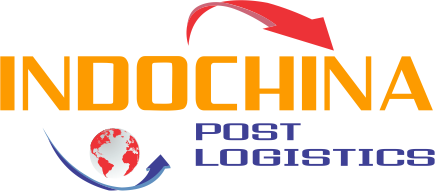Vietnam is rapidly developing and currently ranks first among emerging logistics markets. According to the Vietnam Logistics Business Association (VLBA), this industry accounts for 20 to 25% of GDP structure and is expected to grow at a rate of about 12% per year in the near future. The rapid growth of the e-commerce industry provides numerous opportunities for logistics firms. Express delivery and logistics services aimed at e-commerce, in particular, are ripe for investment. Let’s look at why foreign investors should invest in Vietnam’s logistics market with LETO Invest Consult.
Contents
I. The state of Vietnam’s logistics industry
According to the World Bank’s 2018 rankings, Vietnam ranked 39th out of 160 countries in the Logistics Performance Index (LPI), an increase of 25 places from 2016. Vietnam ranks first in emerging logistics markets for low and middle-income countries, and third in ASEAN, trailing only Singapore and Thailand. The Ministry of Industry and Trade estimated logistics growth in 2018 to be 12-14 percent. There are currently 3000 transport and logistics businesses in Vietnam. According to a survey conducted by Vietnam Report, 73 percent of businesses believe that the transport and logistics industry in Vietnam will grow by more than two digits.
Logistics in e-commerce (E-Logistics) and merger and acquisition (M&A) are two development trends in Vietnam’s logistics industry. 2019 is a record-breaking year for trade. With an increasing demand for online consumer shopping, e-commerce drives up demand for transportation and logistics, particularly delivery services.
According to Google and Temasek’s e-Conomy SEA 2019 report on Southeast Asia’s Internet economy, the size of Vietnam’s e-commerce market is now approaching the US $ 5 billion, with a rapid growth rate of up to 81 percent. Second, only to Indonesia in Southeast Asia, the scale of Vietnam’s e-commerce market may reach 13 billion USD between 2015 and 2020, owing to high and consistent growth.
II. Benefits of Operating in the Logistics Industry in Vietnam
The logistics market in Vietnam is rated as having high development potential based on the following indicators:
1. The economy’s openness
The goods flow transported through regions increased by an average of 16-18% per year; Vietnam’s import and export turnover increased by an average of 16% per year; Vietnam participated in 16 free trade agreements with more than 60 trading partners, including China, Japan, the EU, and the United States… with commitments to open strong commodity markets, increasing demand for logistical services.
Simultaneously, Vietnam significantly opened the logistics service market to foreign service providers and investors, making this market more vibrant and competitive in the near future.
2. Location geographically
Vietnam has favorable natural conditions and a geographical location to develop transport and logistics services, as it has a 3,260-kilometer-long coastline stretching from north to south and is located in the center of the Asia-Pacific region, the gateway to international maritime trade.
3. Establishment of infrastructure
The country has a long coastline and a well-developed road network. Many highway systems and international airports have construction policies. Warehouse systems, as well as port and yard investment, are being aggressively promoted.
4. The policies
The government identified transportation and logistics as inputs and links to other sectors, advocating for reform of administrative procedures for import and export activities, e-customs, trade facilitation, time reduction, and cost reduction in logistics.

